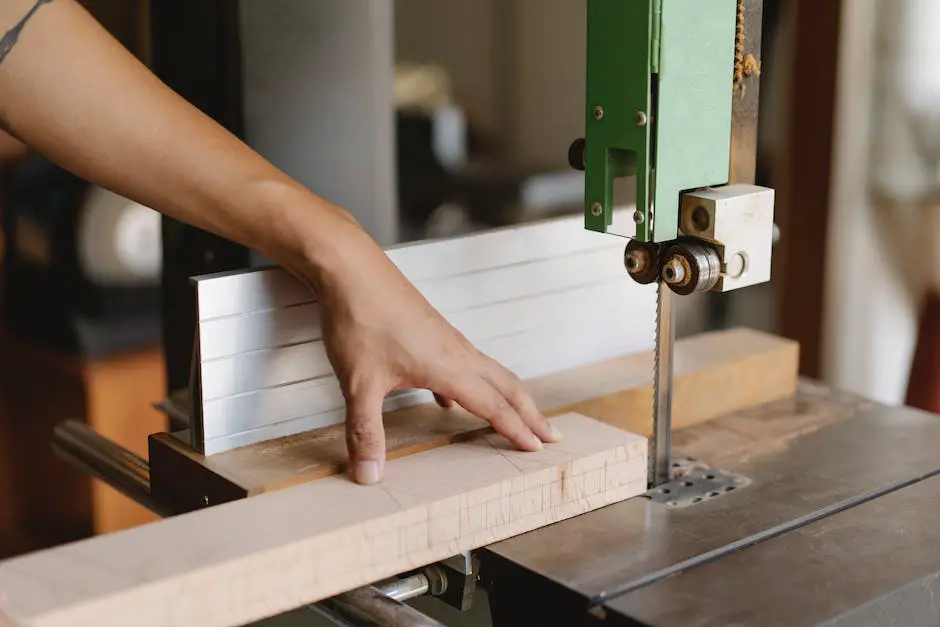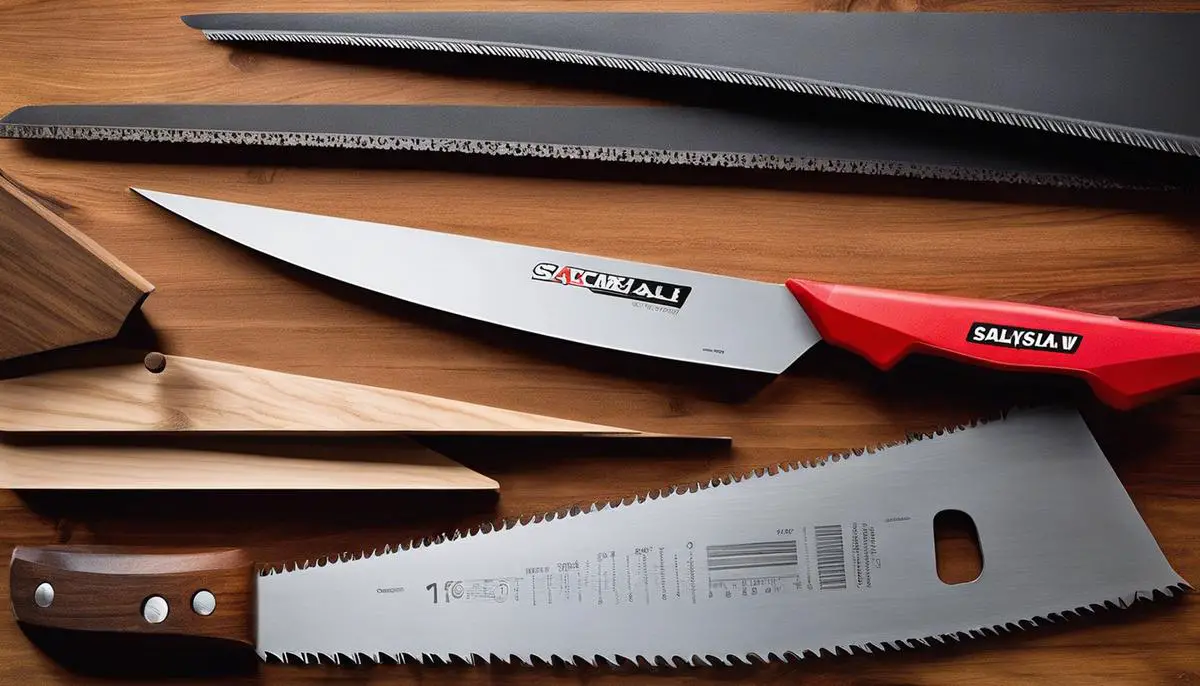In the realm of woodworking, the hand saw is a fundamental tool that every enthusiast and hobbyist should master. It is a versatile tool, capable of making precise cuts, allowing you to shape and create pieces with the utmost accuracy.
In order to effectively use a hand saw, one first needs to grasp the art of choosing the most suitable saw for specific woodworking needs.
Then comes mastering the delicate art of sawing, which includes understanding the skill of positioning, holding the saw at the right angle, and applying the proper amount of pressure for achieving clean, straight cuts.
Finally, to ensure your hand saw lasts a lifetime, the core principles of hand saw maintenance should be implemented which involve regular cleaning, oiling and sharpening to keep it in peak operating condition.
Choosing the Right Hand Saw
Eagerly diving into the world of woodworking brings with it a plethora of tools that promise to help create intricate designs and perfect cuts.
One such tool, a staple in any serious hobbyist’s collection, is the trustworthy hand saw. If straight cuts are the primary objective, just any saw won’t cut it, pun intended.
Indeed, there is an art to choosing the right hand saw for the job. Factors such as teeth per inch (TPI), saw length, handle design and blade shape all come into play.
Let’s dive into these factors, shall we?
Firstly, consider the teeth per inch rating. This determines the efficiency of your cut. Generally, the higher the TPI, the smoother the cut would be.
Hand saws can range from as low as 2 TPI to upwards of 30 TPI. For straight cuts, a TPI of around 7-12 is often ideal. It provides a balance between speed and smoothness.
The next element to ponder is the saw’s length. To choose a size most suitable for straight cuts on your project, consider both comfort and control.
Although a longer saw might help in making faster cuts due to its larger stroke length, it might not offer the same precision and control that a shorter one would.
Thus, for flawless straight cuts, a modest length, around 20-26 inches, comes highly recommended.
Paying attention to the design of the saw’s handle is also paramount. After all, this is the interface between the craftsman and his craft.
For maximum control and comfort, a handle that compliments the size and the grip of the user’s hand will lead to better straight cuts.
Doing that prolonged sawing while knowing that a cramp or a sore palm is not on the horizon? That’s bliss right there.
Last, but certainly not least, is the form of the blade. Traditional Western-style hand saws have straight backs, while Japanese pull saws have a curved edge. For straight cuts, a straight back saw typically offers a higher degree of control.
Looking for the right hand saw to create immaculate straight cuts is undeniably a crucial task. It’s not just about picking up a saw with a sharp blade, but also considering other critical factors such as TPI, length, handle, and blade shape.
These considerations ensure a comfortable and efficient sawing experience and, most importantly, cuts as straight as an arrow.
Now, equipped with this knowledge, may the finest saw find a home in your toolbox. Prepare yourself, masterpieces are on the horizon!

Mastering Sawing Technique
Woodworking Masterclass: Perfecting the Art of Straight Cuts with a Hand Saw
Woodworking is a game of precision where a measured approach will always outshine casual, unhurried techniques.
It’s an intricate waltz, one where the tools become an extension of the craftsman. Among the broad repertoire of woodworking tools, the humble hand saw often enjoys a prominent place and rightfully so.
Mastering straight cuts with a saw is one of those foundational skills that proficient woodworkers can’t go without.
So you’ve meticulously selected your hand saw based on teeth per inch (TPI), handle comfort, saw length, and blade shape?
Great start! Now let’s dive deeper into how you can leverage these aspects to make perfectly straight cuts.
Picture this: You’ve chosen an ideal saw, with a TPI within the recommended range for straight cuts.
It embodies the perfect blend of smooth, efficient cutting without compromising on control. The blade is sturdy and the length aligns with your level of comfort and control, allowing maximum maneuverability.
First things first. Always remember that preparation is key. Before you start sawing, ensure your wood piece is secure.
An unstable piece can not only ruin your cut but is also a major safety concern. Vices or clamps can be great tools to help in stabilizing the wood.
Next, comes the art of marking. Use a square to mark out your cut, drawing a line along the length of the cut.
This is not a step to rush. These markings will be your guide as you saw along, so accuracy at this stage can save a lot of heartaches later on.
Now it’s finally time to put that hand saw to work. Position the saw on the wood, aligning it with marked line.
The handle design of your saw should enable a firm but relaxed grip, letting you guide the saw along the drawn line with precision.
One thing often overlooked is the initial starting strokes. These should be slow and deliberate, aimed at creating a guiding groove for the rest of your cut.
Once the guiding groove is perfect, you can gradually increase your speed. Always ensure that each stroke is a full stroke, this maximizes the efficiency of your saw and reduces wear.
Another important factor is angle of cutting. Ideally, a 45-degree angle ensures optimal use of the saw’s teeth and also provides better control.
While sawing, your blade should remain perpendicular to the wood. This is something a well-chosen blade shape will assist you with, ensuring cleaner, straighter cuts.
Remember, woodworking is not a race, it’s an art. Let your speed be determined by the rhythm you find comfortable and maintainable.
A consistent, steady rhythm has an underrated significance in the world of woodworking. It doesn’t just ensure straight cuts but also ensures the life of your hand saw is maximized.
Equipped with a well-chosen saw and drawing upon these techniques, you’re all set to ace the art of straight cuts!
From creating sleek, smooth furniture pieces to meticulous creations that demand precision, the skill of making straight cuts with a hand saw will take your woodworking game to new heights. Happy woodworking!

Hand Saw Maintenance
Hand saws are a woodworking enthusiast’s bread and butter; it’s their most trusted companion. When chosen correctly and maintained properly, it turns felling trees into an art.
The focus now is to delve into the care and maintenance of your loyal ally: the hand saw.
Maintaining your hand saw isn’t just about ensuring its longevity but also about ensuring the consistency of straight and clean cuts.
So, what’s the magic spell for that perfectly straight cut every time? Let’s explore it together.
First and foremost, we start with the key to longevity – regular cleaning. With each use, microscopic particles from wood and sap accumulate on your saw blade, affecting sharpness and performance.
After each session, a quick clean with a stiff wire brush will keep your blade in top shape.
Once a month, give the blade a thorough cleaning with a solvent such as mineral spirits or denatured alcohol to remove stubborn resin build-ups.
It helps to lubricate the blade before storage, either with a bit of wd-40 or some machine oil. Such maintaining habits not only ensures long-lasting sharpness but also staves off rust buildup.
But what of those inevitable dull moments? Seasoned woodworkers know that a dull blade is the enemy of straight, clean cuts.
Regular sharpening is imperative to guaranteeing stellar performance from your trusty hand saw. Depending on usage, your hand saw may need sharpening every couple of months or so.
Laying the saw on a sturdy and flat surface, secure the handle at one end. Starting at the heel of the saw, that is, the end nearest the handle, file each tooth with a taper file.
Maintain an angle of 60 to 75 degrees between the blade and the file, and use an equal pressure on each stroke.
Patience here is key as rushing might lead to over-sharpening, resulting in an unstable blade.
Don’t forget about your hand saw’s best friend – the handle! An often overlooked aspect is the comfort of the hand grip.
A comfortable grip reinforces control which, in turn, ensures straight and clean cuts. Regularly check your handle for splinters, cracks, or any uncomfortable rough patches.
Sand it smooth as needed and apply a coat of linseed oil for the well-preserved, comfortable grip.
One more important note—no two saws are the same. Each saw is unique and will require a slightly different approach to care and maintenance.
As your experience with the hobby grows, you’ll come to know your hand saws individual quirks and how best to care for it.
A well-kept hand saw not only incites pride in a hobbyist but also reflects the dedication and respect for their craft.
It becomes more than just a tool – it’s an extension of the crafter. To the trained eye, that straight, clean cut isn’t just a cut.
It’s a signature of a well-kept tool and a devoted woodworker. So keep honing and honing that blade, and let the straight, clean cuts be the testament to your craft!
Happy sawing, fellow woodworkers!

Photo by baileyal3xander on Unsplash
Working with wood is a satisfying pursuit, made even more enjoyable when you have mastered the cornerstone tools such as the hand saw.
The key to success lies in choosing the right saw for the task you’re undertaking, perfecting the sawing technique with correct positioning, maintaining the perfect angle holding and appropriate pressure application for clean and straight cuts.
Moreover, ensuring the longevity of your tools through regular maintenance keeps them in optimal working condition, which in turn, improves your woodworking efficiency.
Equipped with this newfound knowledge on sawing and maintenance, you’re now well on your way to becoming a skilled woodworker, capable of handling most woodworking tasks with ease and confidence.


